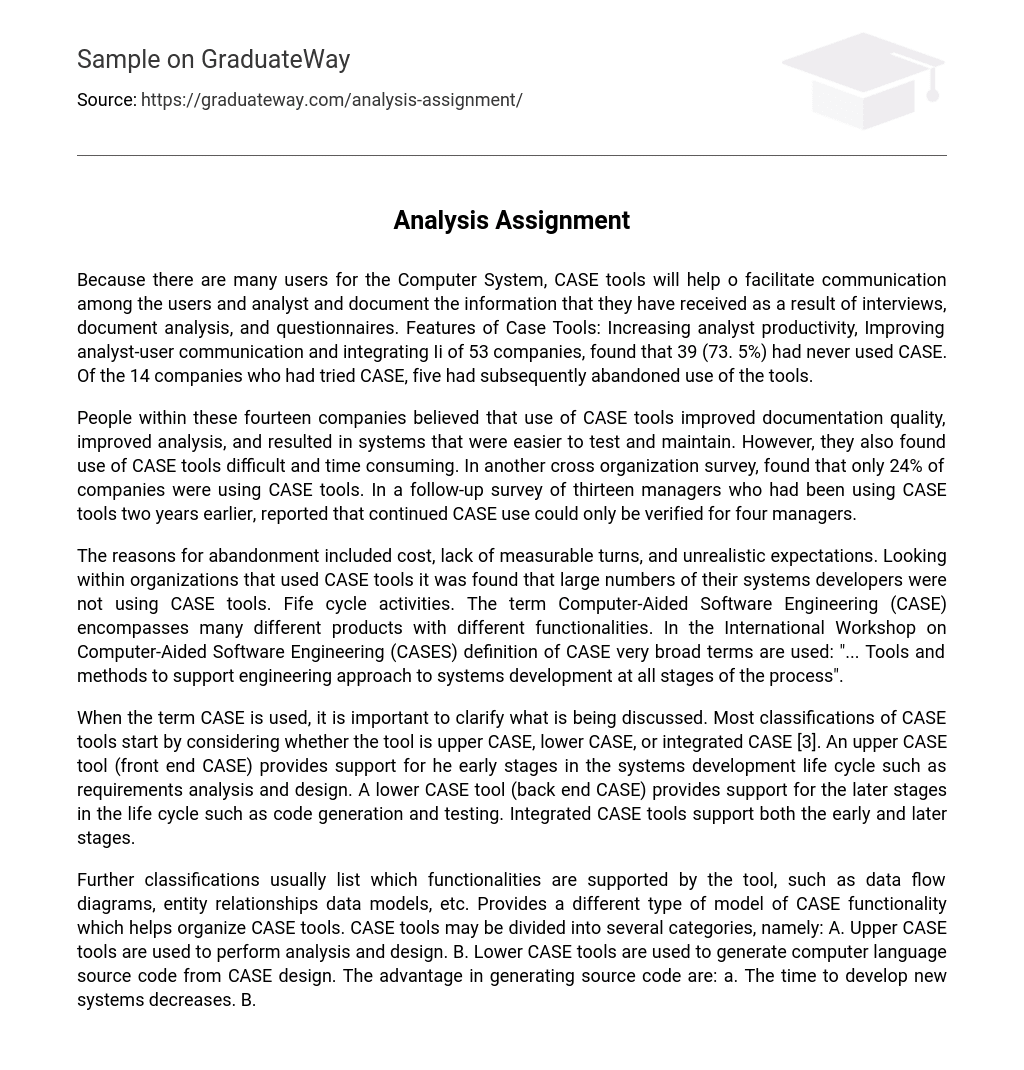Because there are many users for the Computer System, CASE tools will help o facilitate communication among the users and analyst and document the information that they have received as a result of interviews, document analysis, and questionnaires. Features of Case Tools: Increasing analyst productivity, Improving analyst-user communication and integrating Ii of 53 companies, found that 39 (73. 5%) had never used CASE. Of the 14 companies who had tried CASE, five had subsequently abandoned use of the tools.
People within these fourteen companies believed that use of CASE tools improved documentation quality, improved analysis, and resulted in systems that were easier to test and maintain. However, they also found use of CASE tools difficult and time consuming. In another cross organization survey, found that only 24% of companies were using CASE tools. In a follow-up survey of thirteen managers who had been using CASE tools two years earlier, reported that continued CASE use could only be verified for four managers.
The reasons for abandonment included cost, lack of measurable turns, and unrealistic expectations. Looking within organizations that used CASE tools it was found that large numbers of their systems developers were not using CASE tools. Fife cycle activities. The term Computer-Aided Software Engineering (CASE) encompasses many different products with different functionalities. In the International Workshop on Computer-Aided Software Engineering (CASES) definition of CASE very broad terms are used: “… Tools and methods to support engineering approach to systems development at all stages of the process”.
When the term CASE is used, it is important to clarify what is being discussed. Most classifications of CASE tools start by considering whether the tool is upper CASE, lower CASE, or integrated CASE [3]. An upper CASE tool (front end CASE) provides support for he early stages in the systems development life cycle such as requirements analysis and design. A lower CASE tool (back end CASE) provides support for the later stages in the life cycle such as code generation and testing. Integrated CASE tools support both the early and later stages.
Further classifications usually list which functionalities are supported by the tool, such as data flow diagrams, entity relationships data models, etc. Provides a different type of model of CASE functionality which helps organize CASE tools. CASE tools may be divided into several categories, namely: A. Upper CASE tools are used to perform analysis and design. B. Lower CASE tools are used to generate computer language source code from CASE design. The advantage in generating source code are: a. The time to develop new systems decreases. B.





